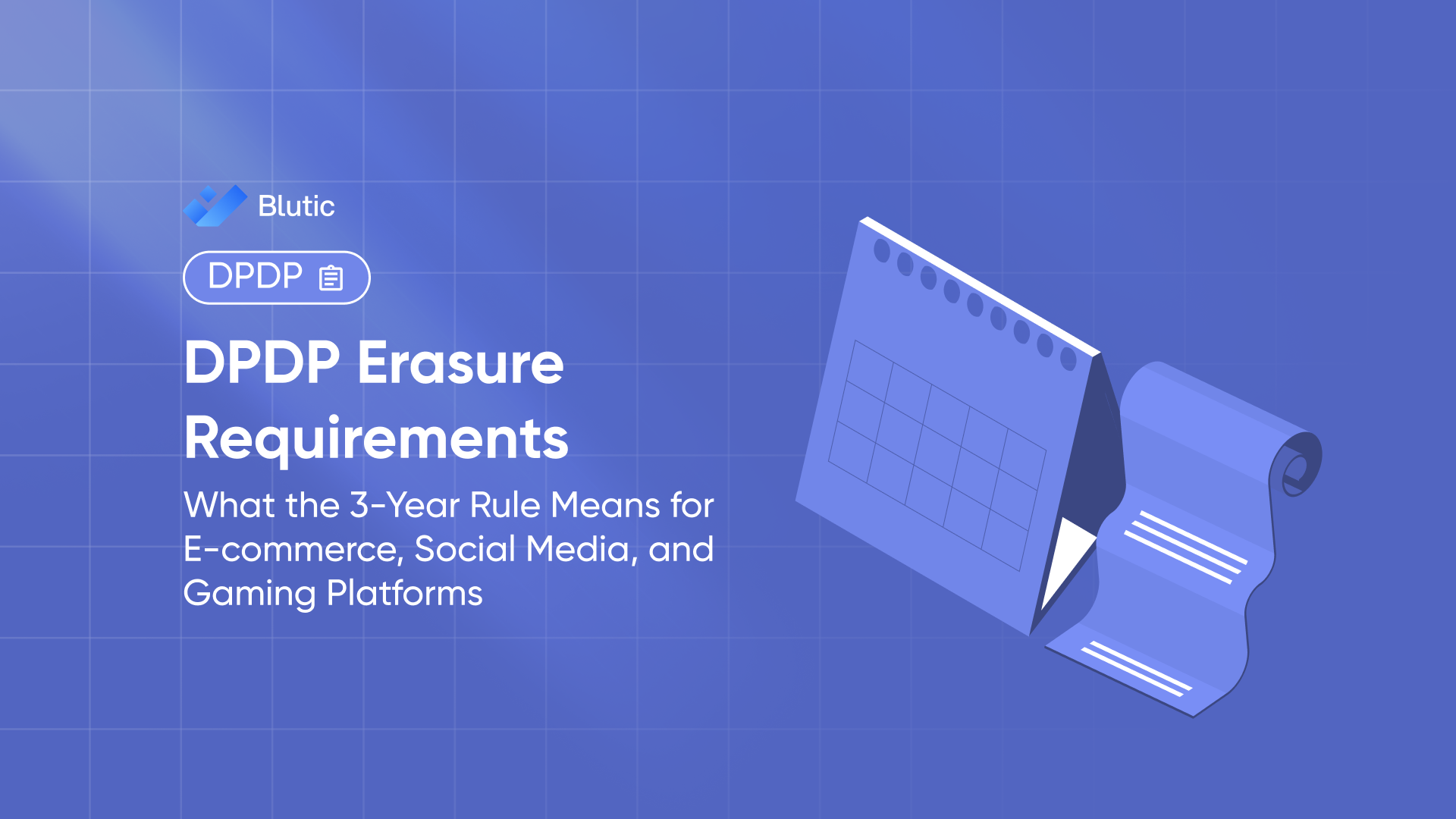Top 7 DPDP Mistakes Indian Websites Are Still Making

Top 7 DPDP Mistakes Indian Websites Are Still Making (and How to Fix Them)
Introduction
The Digital Personal Data Protection Act (DPDPA) is now enforceable, and Indian businesses are racing to catch up. While many websites have made surface-level changes, most are still non-compliant in critical ways exposing themselves to penalties, loss of user trust, and reputational damage.
Here are the top 7 common DPDP compliance mistakes Indian websites are still making and exactly how to fix them.
1. Assuming Cookie Banners = Compliance
Displaying a generic “We use cookies” banner does not mean you’re compliant. Under DPDP, websites must obtain explicit, informed consent before deploying any non-essential cookies.
Fix:
Use a dynamic consent management platform that blocks trackers until the user consents and categorizes cookies by purpose (e.g., essential, analytics, marketing).
2. Ignoring Consent Withdrawal and Modification
Most Indian websites still lack a mechanism for users to change or revoke their consent. The DPDP Act clearly states that consent should be as easy to withdraw as it is to give.
Fix:
Implement a persistent “Manage Consent” button or preference center where users can update their choices at any time.
3. Not Storing Consent Records
One of the most overlooked areas of DPDP compliance is record-keeping. If your business cannot prove that consent was collected lawfully, you're vulnerable to audits and penalties.
Fix:
Maintain timestamped consent logs that track:
- User actions (opt-in/out)
- Device and IP identifiers
- Purpose-specific preferences
- Date and version of policy agreed to
4. Firing Trackers Before Consent Is Given
Websites often preload analytics tools (like Google Analytics or Facebook Pixel) before the user has agreed. This is a direct violation of the law.
Fix:
Integrate cookie blocking mechanisms that delay any non-essential tracking scripts until after user consent is captured via tools like Google Tag Manager with consent mode.
5. One-Size-Fits-All Consent Banners
Using the same banner for every user, regardless of geography or language, doesn’t work in India’s multilingual, diverse environment.
Fix:
Use geo-targeted, multi-language consent banners that are:
- Easy to understand
- Regionally relevant
- Accessible across devices
6. No Age Verification or Minor Consent Protocols
The DPDP Act sets the age of consent at 18. Many websites collecting user data don’t have age verification measures in place especially in sectors like EdTech, healthcare, or e-commerce.
Fix:
Incorporate age gating, guardian consent prompts, or disclaimer screens before collecting data from users who may be minors.
7. Relying on Legal Text Alone
Publishing a long privacy policy full of legal jargon doesn’t satisfy the transparency requirement of the DPDP Act. Users must understand what data is collected, why, and how it will be used in plain language.
Fix:
Complement your policy with:
- Simple explanations
- Consent banners with plain language
- Visual summaries (e.g., cookie categories with descriptions)
The Blutic Advantage
Blutic simplifies DPDP compliance with features like:
- Custom cookie banners that block tracking until consent
- Geo-targeting and multi-language support
- Consent logging and audit-ready dashboards
- Easy integration with GTM, Shopify, WordPress, and others
- User-friendly interfaces to change, revoke, and manage consent anytime
From onboarding to compliance reporting, Blutic helps Indian websites stay on the right side of privacy law without compromising UX.
Compliance with the DPDP Act isn’t just about checking a box it’s about respecting your users' data rights in a meaningful, transparent, and verifiable way.
The good news? Each of these common mistakes is fixable today with the right tools and mindset
Frequently Asked Questions
Penalties can go up to ₹250 crore depending on the nature of the violation and failure to meet consent or processing standards.
Yes. Any website collecting personal data must display consent banners and block non-essential cookies until consent is given.
Yes. Platforms like Blutic offer no-code integrations and quick onboarding across common website builders and CMS platforms.
More Blogs
Get the indise scoop: the latest tips, tricks, & product updates
%20.png)




